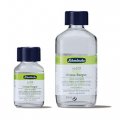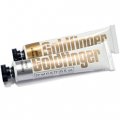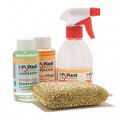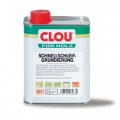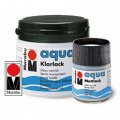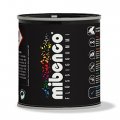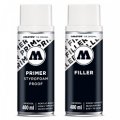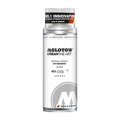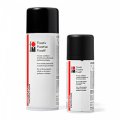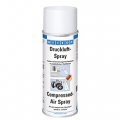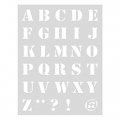Auxiliaries for Acrylic Painting
Golden Auxiliaries for Acrylic Painting
The Golden auxiliaries for acrylic painting include primers (grounds) for preparing painting surfaces as well as painting agents and additives with which the processing characteristics as well as the transparency, glossiness and viscosity of acrylic paints can be altered.
A third, very large group is comprised of the gels and textural (form) pastes whose general attributes and differences are the subject of these introductory remarks.
Gels and textural pastes primarily serve as a way to build structures and textures in the acrylic painting process while at the same time altering the level of glossiness and transparency of the acrylic paints themselves. The range of different consistencies runs from liquid and pourable (e,g. GOLDEN SELF LEVELING CLEAR GEL) to very pasty and mouldable (e.g. GOLDEN LIGHT MOLDING PASTE), while the level of glossiness that is customizable runs from high gloss to deep matte. The difference between gels and textural pastes lies in their transparency or, from the other perspective, their opacity. Both are white in colour when liquid; gels, however, become transparent colourless or, alternatively, translucent colourless when dry while textural pastes, on the other hand, are white opaque when dry because they contain additives like, for example, marble dust. When mixed with acrylic paint, textural (form) pastes increase the paint´s opacity but nonetheless make it more “pastel-like” - much like the addition of white acrylic paints does.
A gel is basically an acrylic paint without the pigments – in other words it functions like a binding agent. This makes gels perfect for extending (thinning) paints for cost-saving or artistic purposes. If a large amount of gel is added to a paint it will increase its transparency while still allowing it to keep its good paint application properties. The glossy, semi-matte or matte gel versions can be selected based on the desired glossiness for your acrylic paint.
Another use of gels and pastes is the alteration of an acrylic paint´s consistency. GOLDEN HEAVY BODY ACRYLICS, for example, can be made more fluid by adding CLEAR TAR GEL, while with EXTRA HEAVY GEL it can be made more pasty in order to use it for the impasto painting technique. Structural elements can of course be built up with pure gels or pastes whereby they can subsequently be painted over with acrylic colours. This method produces the most pronounced structure.
Because most of the gels are indeed pure binding agents they can be used in conjunction with dry pigments to make your own acrylic paints! For this project the glossy gel versions have the best binding properties and change the luminosity of your pigments the least.
Gels and pastes are also great for gluing collages because of their adhesive properties.
The Golden gels and pastes have the same degree of waterproofness, age resistance, lightfastness as well as archival quality as the acrylic paints.
Processing: Gels and pastes can be used as grounds (primers), can be applied over acrylic paints or can be mixed with them. Most of the gels and pastes are intermixable and can also be mixed with other mediums and additives. They can be applied to practically all grease-free surfaces; non-absorbent substrates must be sanded prior to application. The minimum working temperature is +9 °C. All mixing work should be done with a great degree of finesse because strong stirring or (God forbid) shaking will cause unwanted foam to develop. Drying times are dependent on environmental factors like temperature, humidity and ventilation and can be as long as months in the case of thick applications. The milky film of the binding agent only disappears after curing has completely finished. Any tools used can be cleaned with water and soap.

